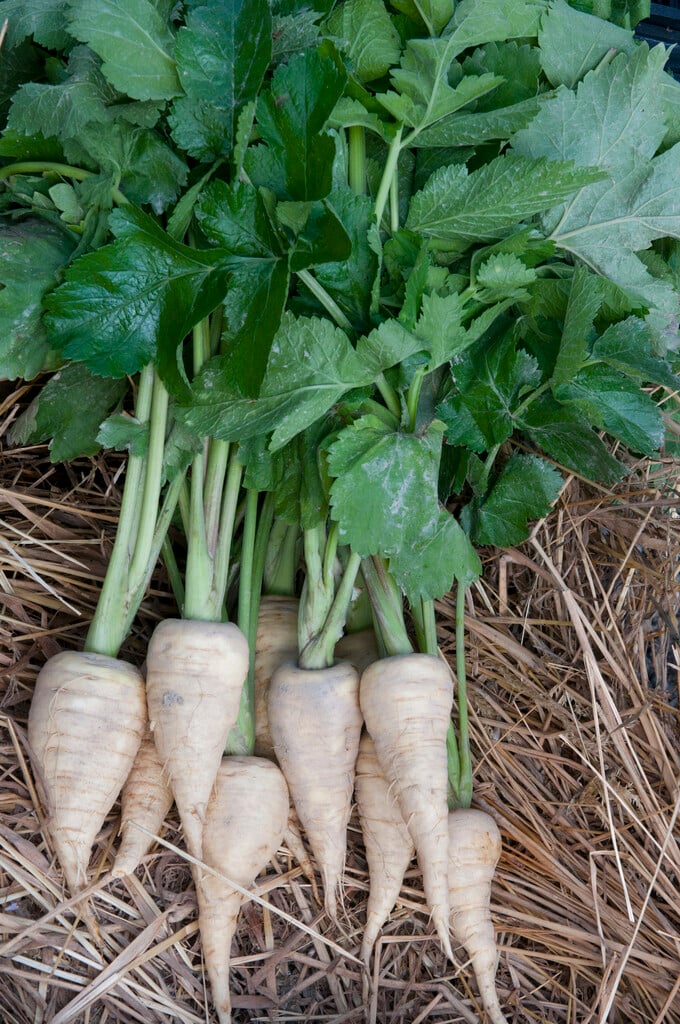Pastinaca sativa
parsnip
A tap-rooted biennial, the wild parsnip has a strong characteristic fragrance, its solid or hollow, ridged stems reaching 1.2m in height with pinnate, lobed and segmented green leaves. In summer it bears yellow umbel flowers Cultiivars of the wild parsnip are easy to grow, need little maintenance and can be left in the ground until you’re ready to use them. Sow in spring and you’ll have parsnips from autumn and, depending on the variety, you can be harvesting right through until February/March - so with some planning you’ll be eating home grown parsnips for your Christmas roast
Synonyms
Peucedanum sativumSize
Ultimate height
0.1–0.5 metresTime to ultimate height
1 yearUltimate spread
0.1–0.5 metresGrowing conditions
Moisture
Moist but well–drainedpH
Acid, NeutralColour & scent
| Stem | Flower | Foliage | Fruit | |
| Spring | Green | |||
|---|---|---|---|---|
| Summer | Green | |||
| Autumn | Green | |||
| Winter | Green |
Position
- Full sun
- Partial shade
Aspect
East–facing or South–facing or West–facing
Exposure
Sheltered Hardiness
H5Botanical details
- Family
- Apiaceae
- Native to GB / Ireland
- Yes
- Foliage
- Deciduous
- Habit
- Columnar upright, Clump forming
- Potentially harmful
- Harmful to skin with sunlight. Wear gloves and other protective equipment when handling Pets (dogs): Harmful to skin with sunlight - see the HTA guide to potentially harmful plants for further information and useful contact numbers
- Genus
A small genus of flowering, biennial plants from the carrot family. The cultivated species of parsnip is well-known for its edible, sweet, cream-yellow taproot. Flowers are produced in umbels, carried at the top of upright stems in second year
- Name status
Correct
How to grow
Cultivation
Grow on an open, sunny site with deep, light soil. Keep the soil evenly moist to prevent roots splitting. Add well-rotted manure the previous autumn, especially if growing on a clay or chalk soil. Chalk and clay aren’t ideal for growing parsnips so you could also try deep containers. The ideal soil pH is 6.5-7 so adjust pH where necessary. See parsnip cultivation for more information.
Propagation
Propagate by seed. See sowing vegetable seeds
Suggested planting locations and garden types
- Cottage and informal garden
- Wildlife gardens
Pruning
No pruning required..
Pests
May be susceptible to carrot fly.
Diseases
May be susceptible to parsnip canker.
Get involved
The Royal Horticultural Society is the UK’s leading gardening charity. We aim to enrich everyone’s life through plants, and make the UK a greener and more beautiful place.
